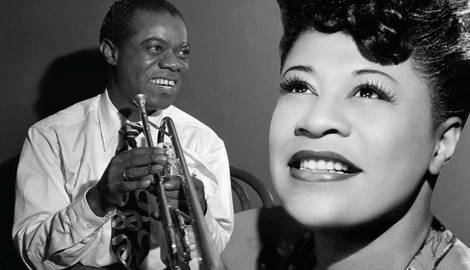
Music was a vital strand of the Harlem Renaissance, a powerful means of expression for many of the Black African Americans who had settled in the Harlem district of New York during the early 20th century. So much so, many of the musical artists of the Harlem Renaissance went on to become monumentally successful, world-renowned artists, and their music is still recognized and admired by fans across the globe today. Jazz and blues were the predominant style that colored Harlem’s busy nightlife, an upbeat, improvisatory style that encouraged lively dancing and singing. We take a look through the most outstanding musicians of the era, who excelled in a variety of instruments between them.
Chick Webb

Born in 1905, Chick Webb went on to become a leading swing drummer for the house band at the popular nightclub the Savoy Ballroom. Webb suffered from tuberculosis of the spine which left him with a severe hump back, but this did little to hold him back. Due to his outstanding memory, he could memorize almost any musical composition, despite never learning to read music. Webb established his own modified drum kit that incorporated a series of complex percussion devices, and allowed him to play complex, multi-layered solos that dazzled his audiences. Such was his widespread acclaim; he became known as the ‘king of swing.’
Louis Armstrong

Known as the world’s greatest trumpet player during his lifetime, the prodigiously talented musician Louis Armstrong was a jazz singer and trumpeter with a highly distinctive style that was so influential, he forever altered the course of musical history. His career spanned much of the 20th century, during which time he evolved a spirited, experimental and improvisatory way of performing which showcased his quick-thinking abilities and exceptional skills. Born in New Orleans, he settled in Harlem during the 1920s, where he performed regularly at the Cotton Club, as well as touring throughout the United States.
Billie Holiday

African American singer Billie Holiday became a leading member of the Harlem Renaissance nightclub scene from the 1930s to the 1950s, where she was able to establish her name as one of the most significant and distinctive voices of the entire 20th century. During the 1930s, Holiday became the first African American woman to perform with an entire orchestra, leading to a series of show stopping performances and recordings. Her distinctive earthy, mellow vocal tone stood out amongst a sea of performers during the era, and she became a master at exploring vocal improvisations in the jazz oeuvre.
Duke Ellington

Duke Ellington first made his name as a jazz pianist in Washington D.C., but he later made his way to New York during the 1920s, at the peak of the Harlem Renaissance. After performing on Broadway for several years, he and his band became in-house performers at Harlem’s popular Cotton Club. His talents extended across jazz performance, conducting and composition, and he became widely renowned for pioneering big band jazz, which incorporated a large group of musicians and a rich and complex musical style.
Ella Fitzgerald

Known today as the “queen of jazz,” African American singer Ella Fitzgerald introduced her sonorous talents to the world during the Harlem Renaissance. Following a troubled childhood, she won an amateur singing contest at Harlem’s Apollo Theatre in 1934. From there, she joined Chick Webb’s band as a singer, and became a regular performer at Harlem’s Savoy Ballroom, where her career went from strength to strength. Her impressive vocal range, and ability to perform improvised scatting earned her a widespread following and a string of recording deals.










